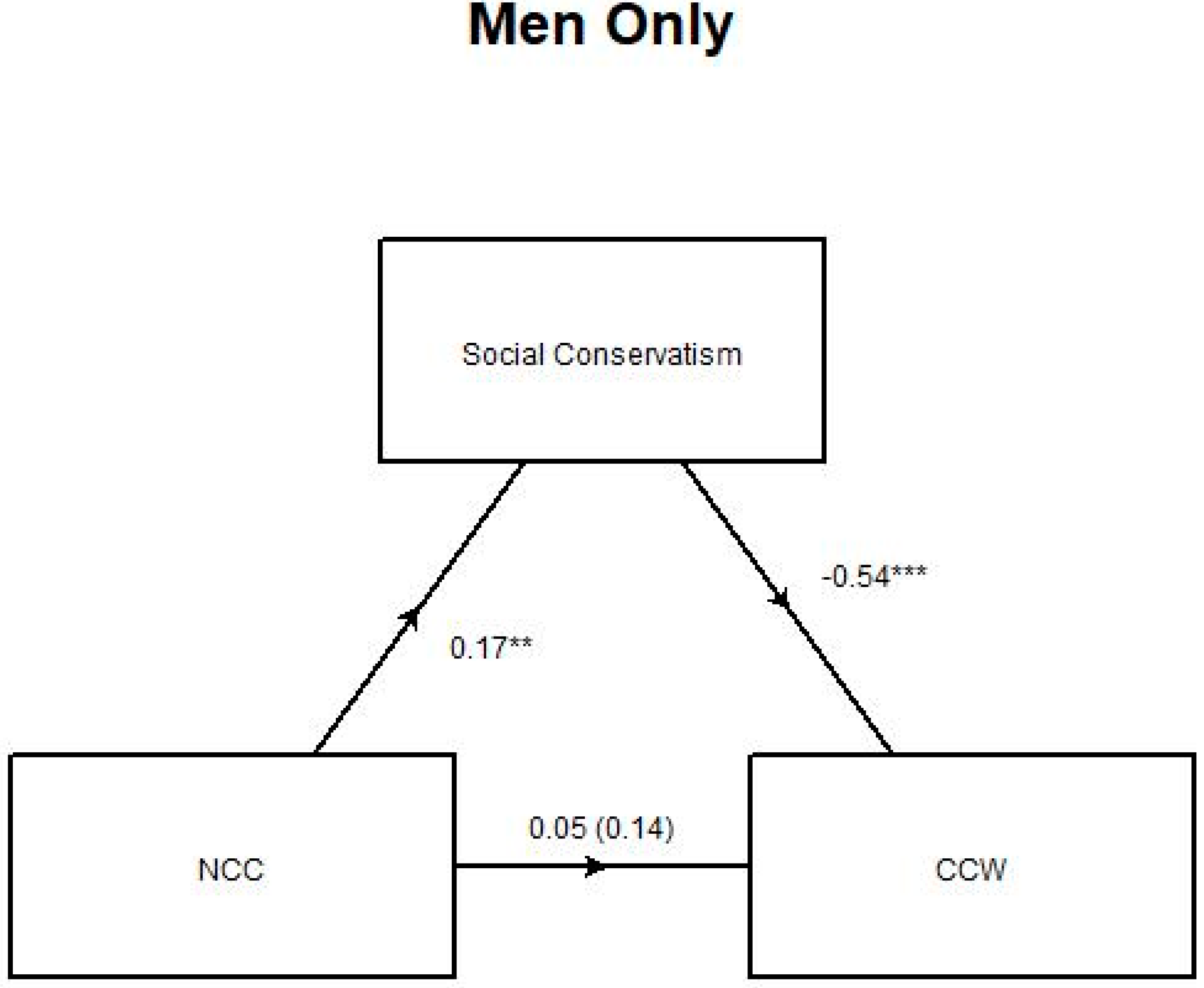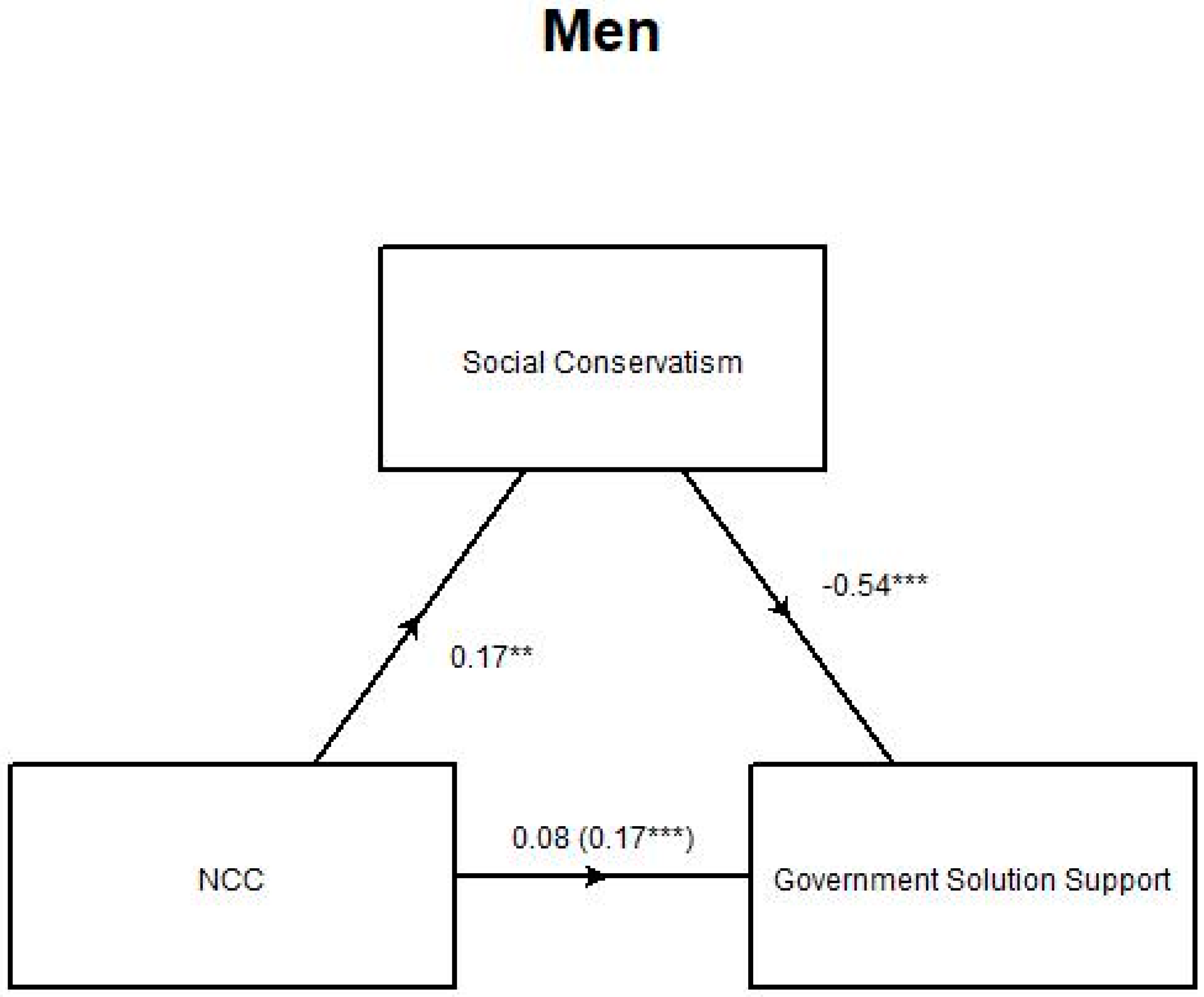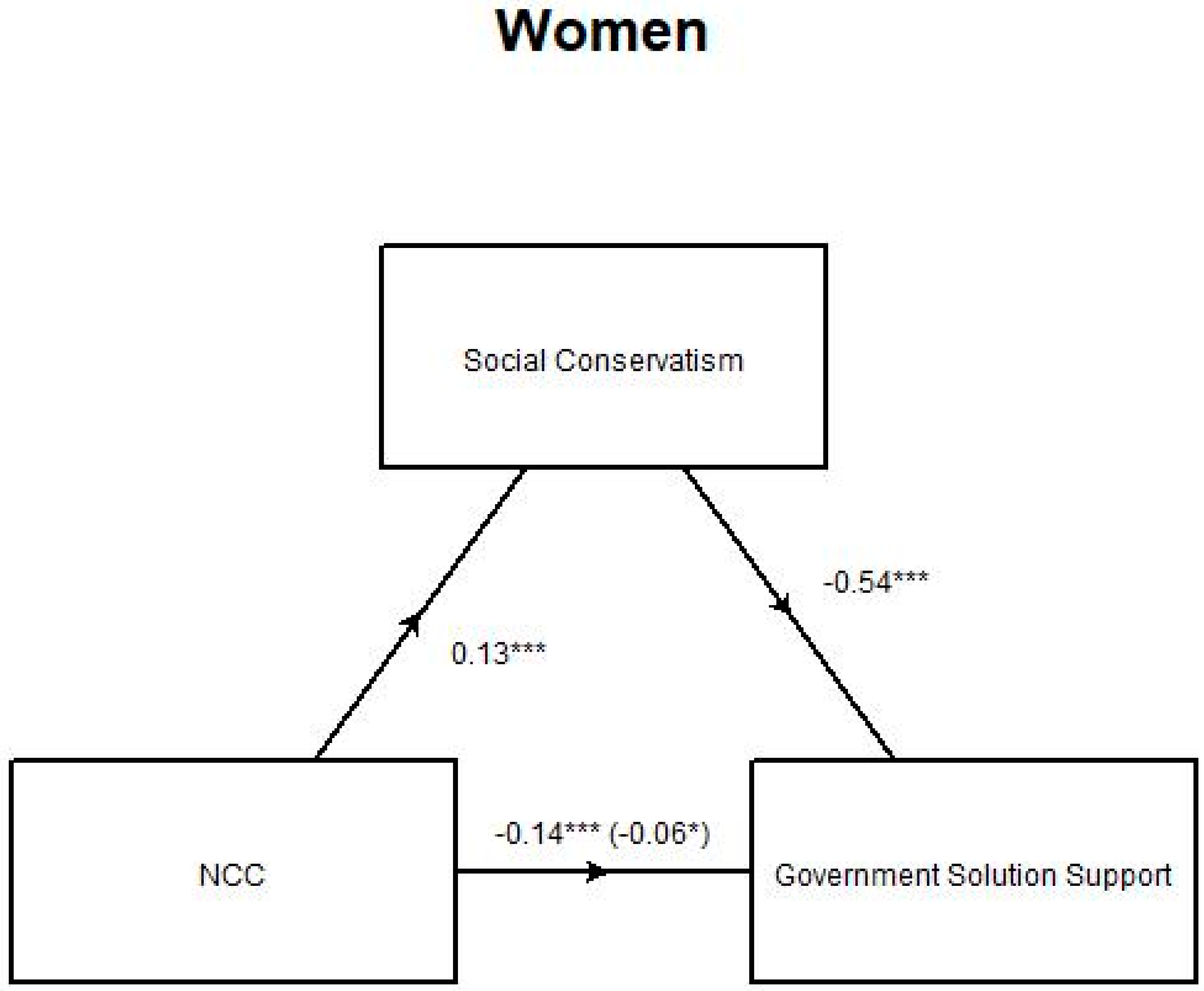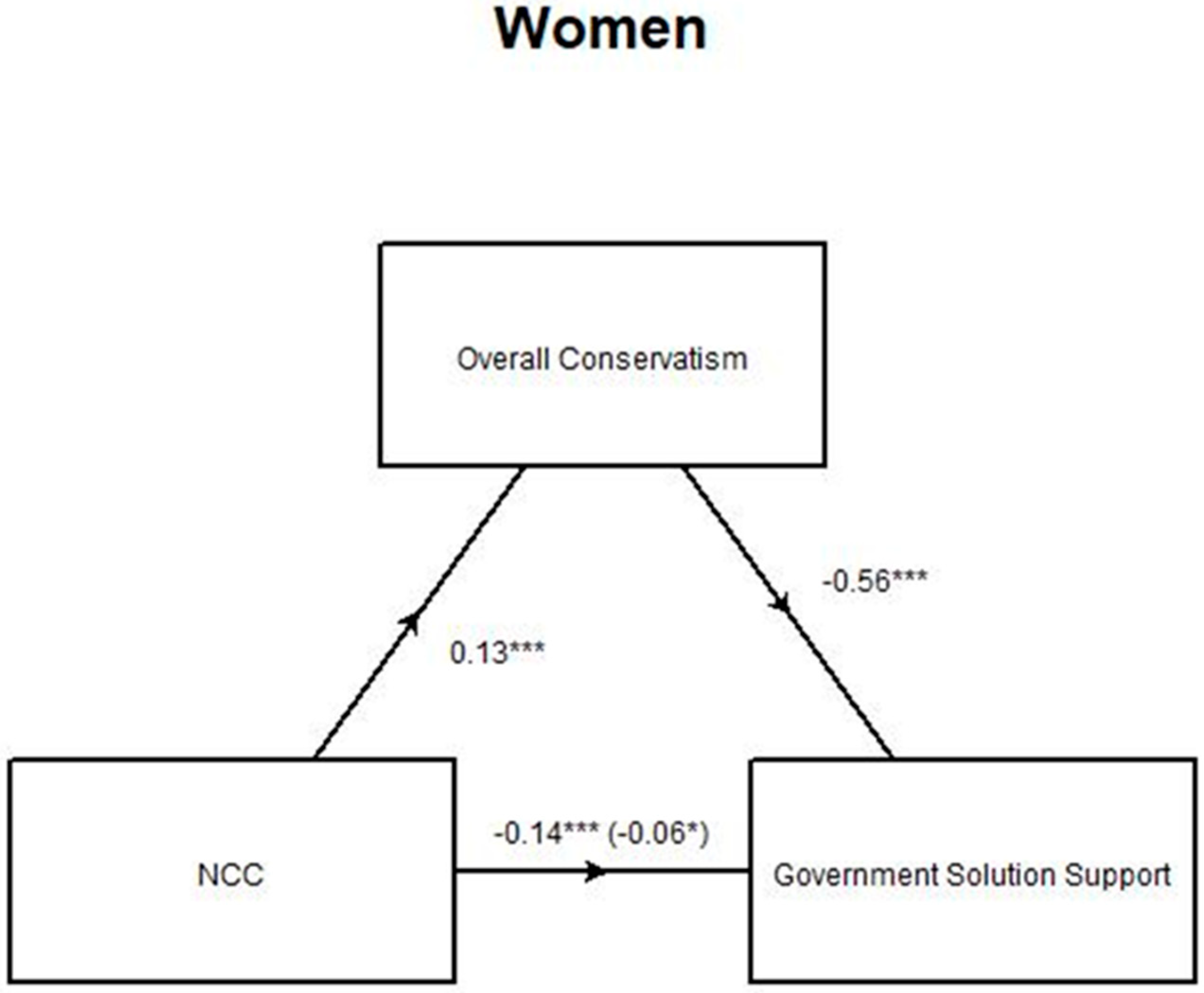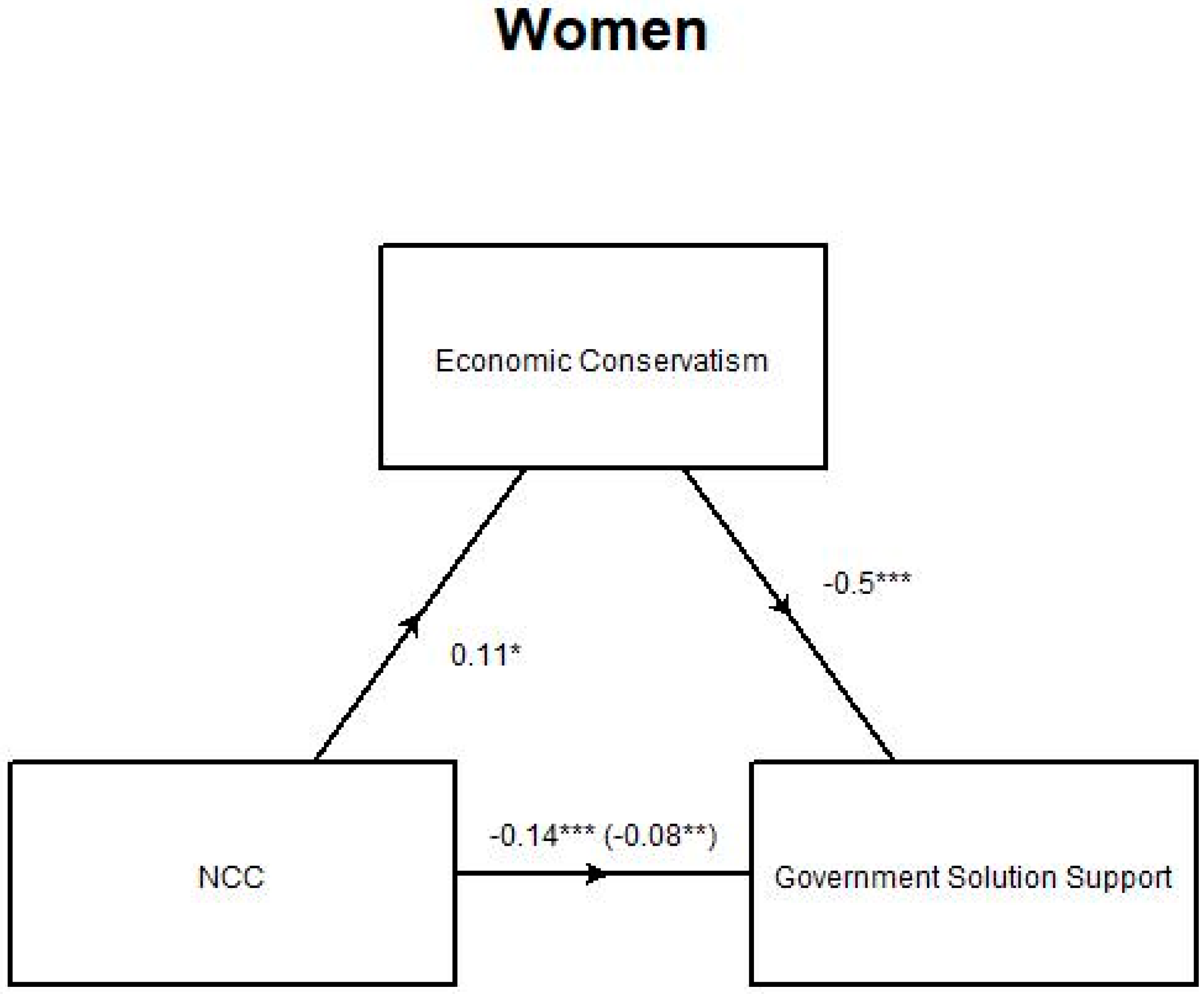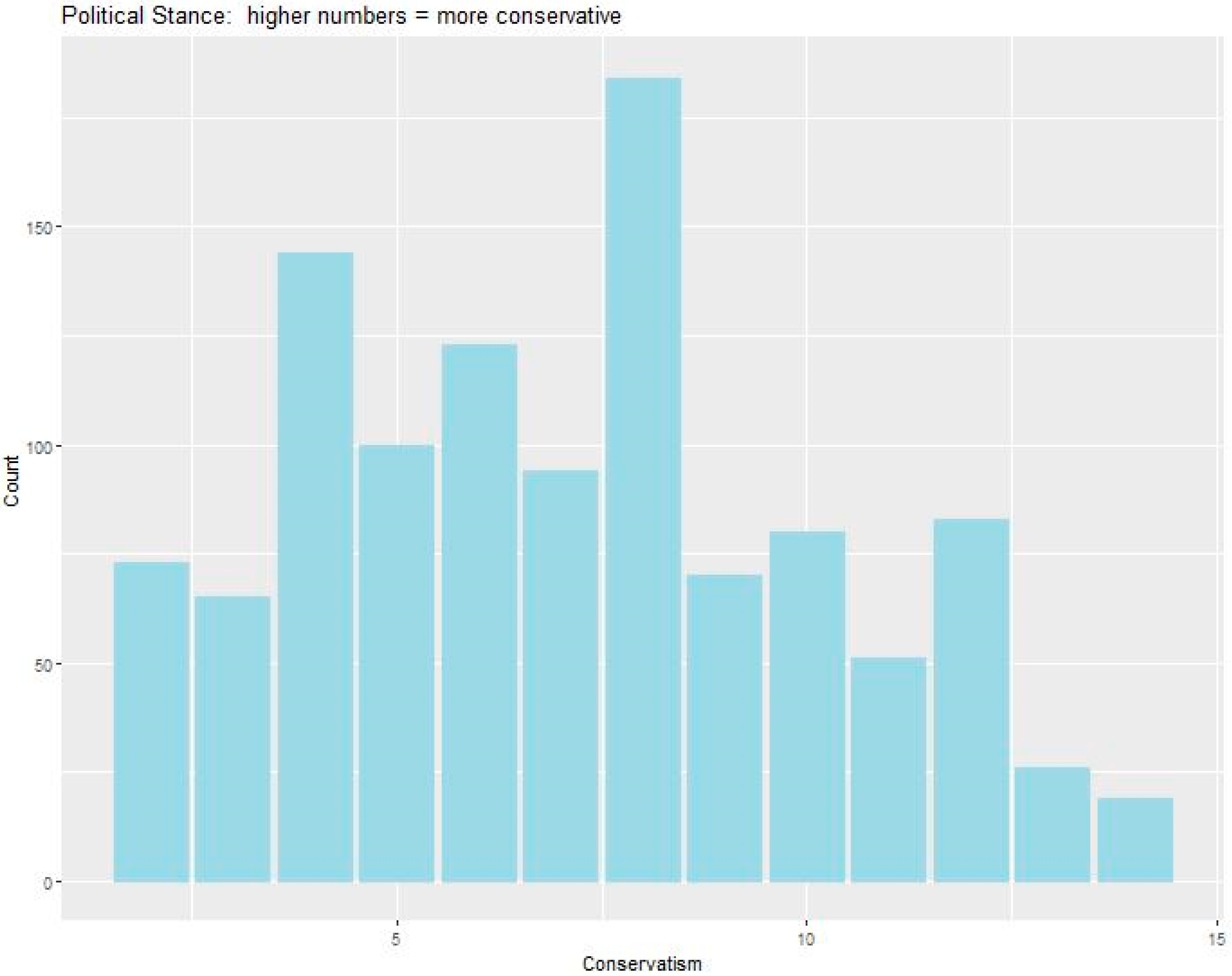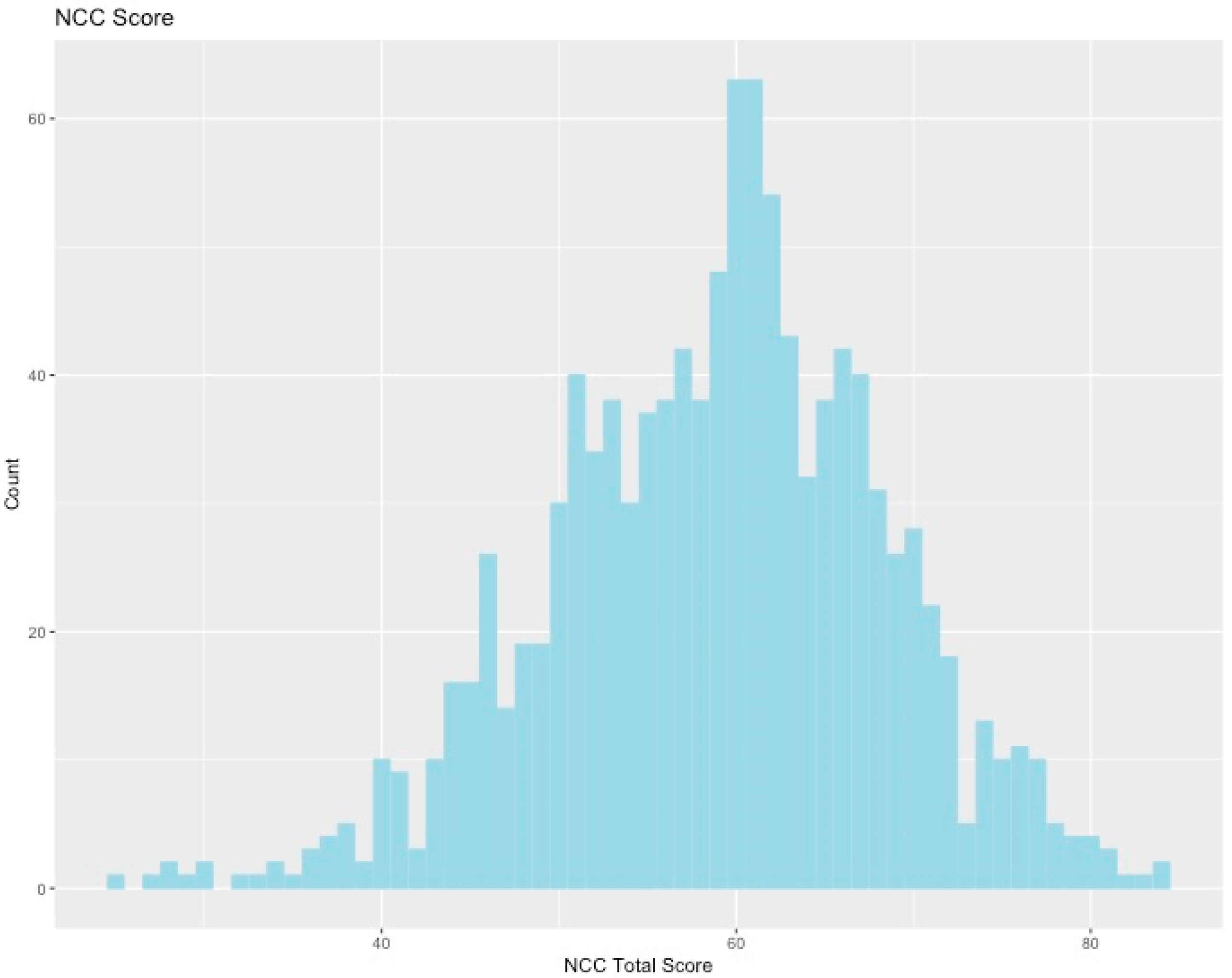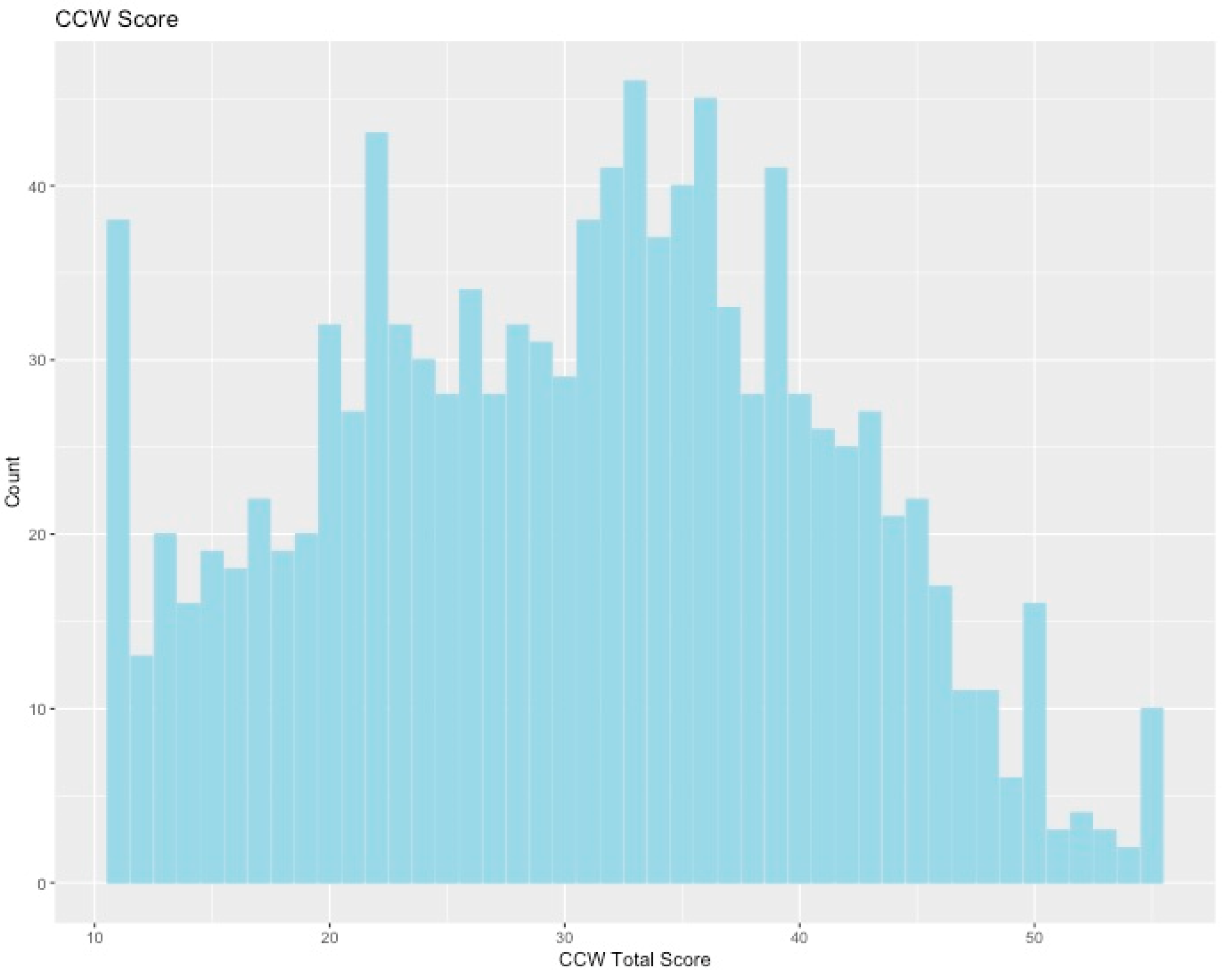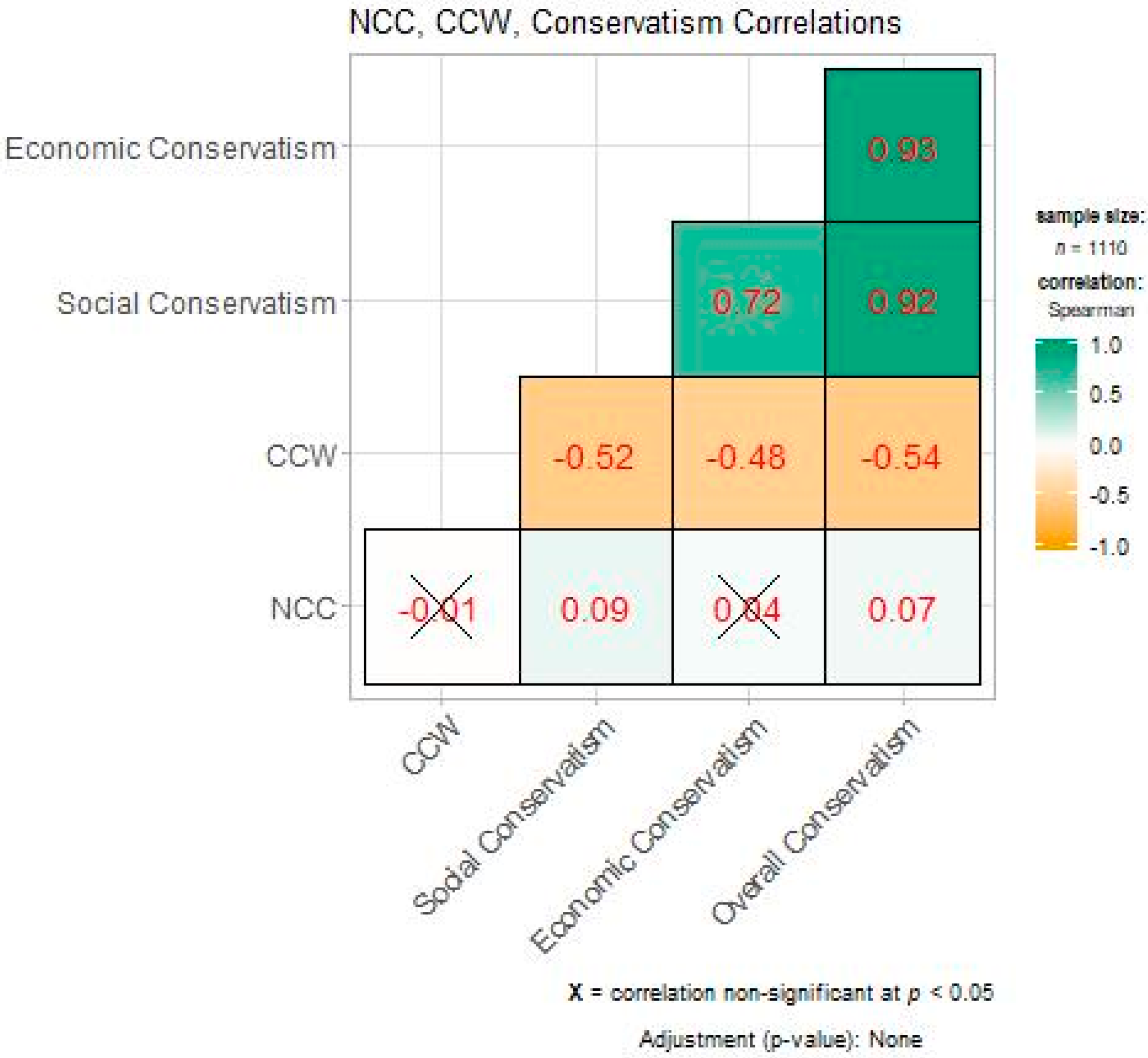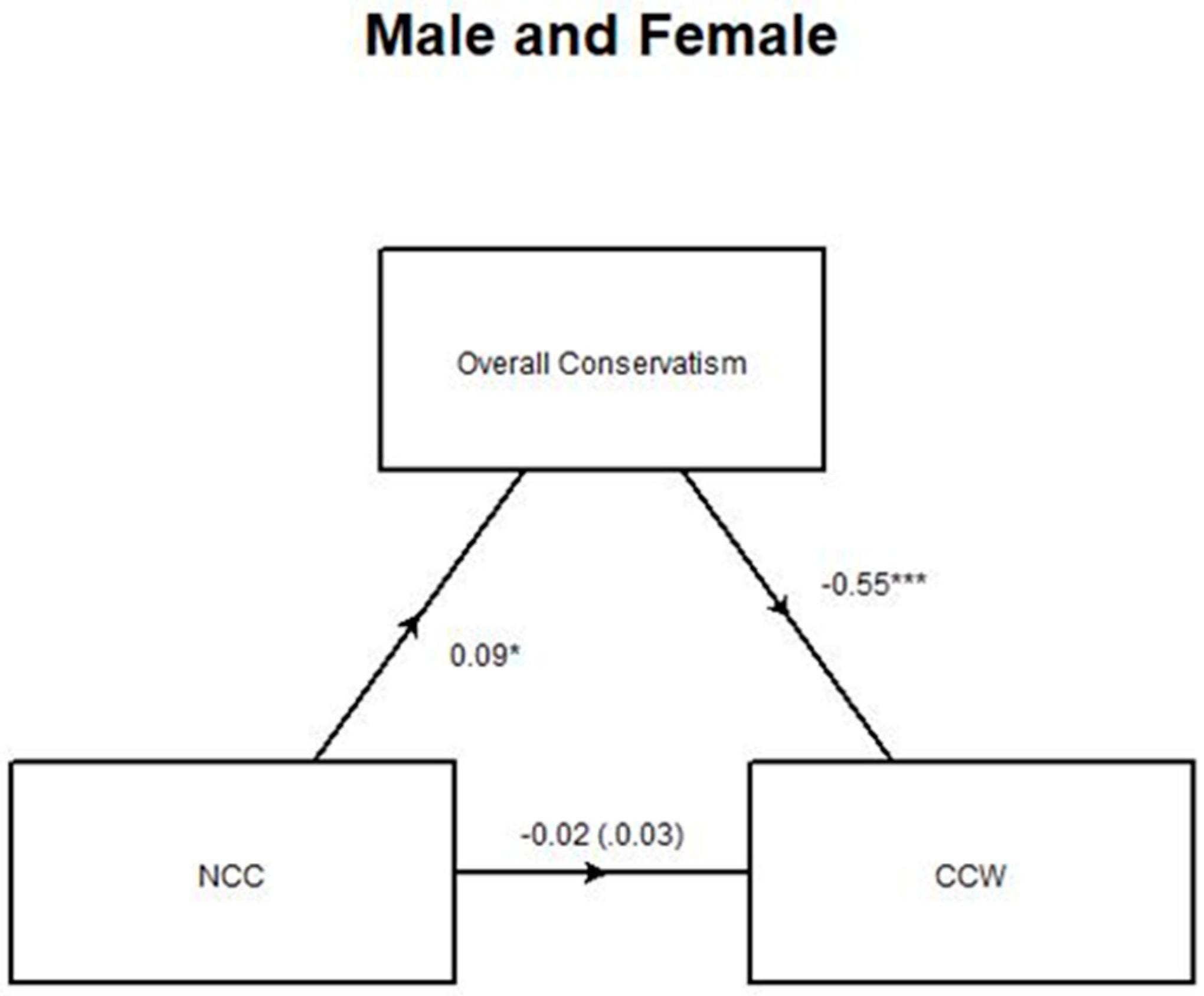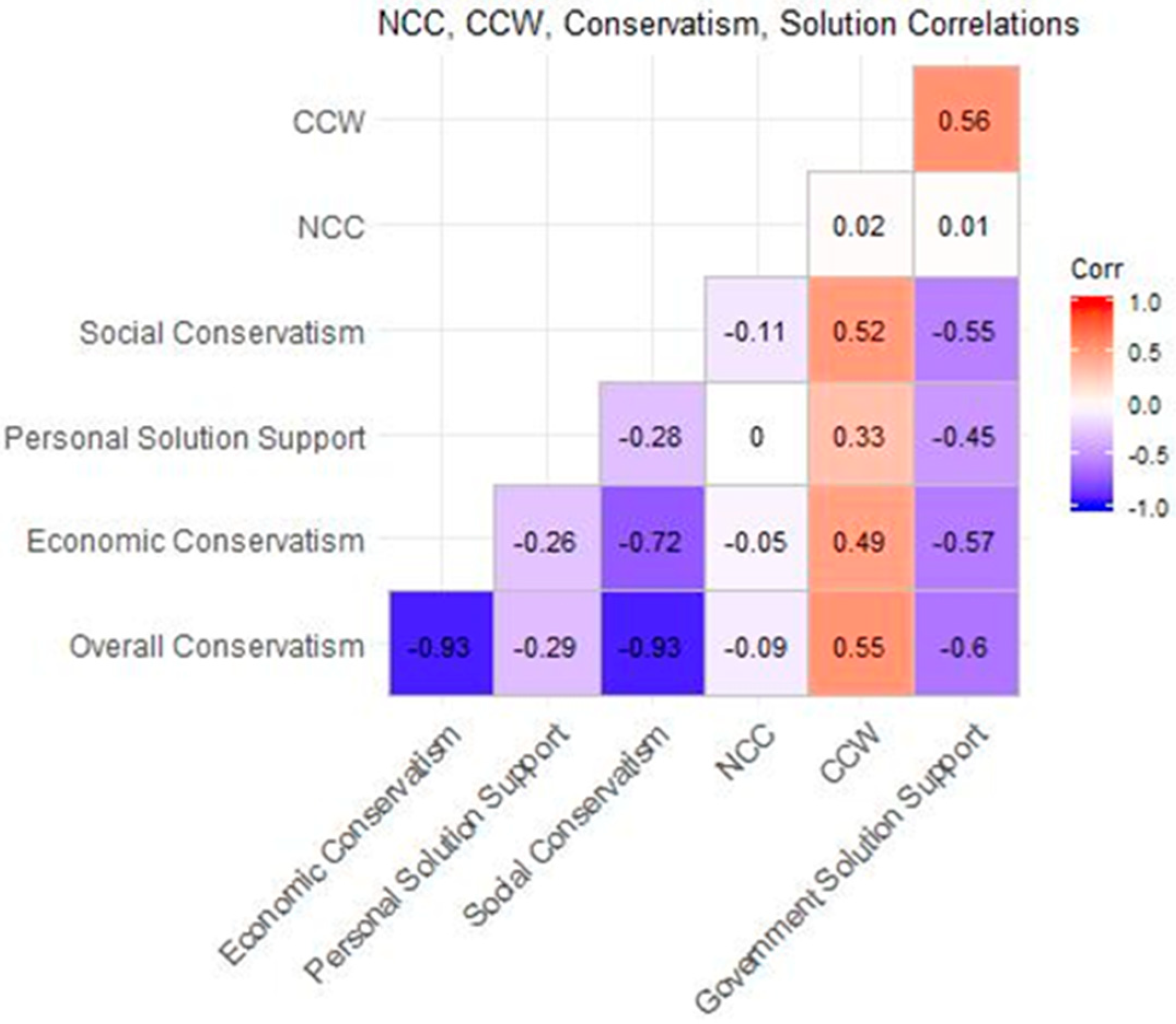1. Introduction
Despite the vast amount of scientific evidence showing that human activities are causing the Earth’s climate to rapidly change; and that these changes will result in dire consequences in the future, there is substantial doubt and inaction regarding this issue in the United States [
1,
2] Only about 57% of American adults know that climate change is caused mostly by human activities, and only 49% know that most scientists agree that this is the case [
2]. Enough doubt has been created about these facts, some of it purposefully, that the United States, one of the top emitters of fossil fuels worldwide, is making little to no progress to solve this issue [
3]. It is of utmost importance for the future of humanity that Americans change their behaviors regarding climate change, from grassroots individual actions to sweeping policy and energy generation changes. A key part of making this behavior change happen is communicating the risks and ramifications of climate change in such a way that people are motivated to make a change. Thus, it is critical to study how climate change is communicated, what messages work for different audiences, and what makes different audiences more or less receptive to climate-related information. One way that audiences can be differentiated is by gender. It has been shown that women generally exhibit greater climate change knowledge and concern than men [
4]. However, they also tend to underestimate their level of knowledge more than men do [
4]. Another divider when it comes to climate change belief is political affiliation. There has been significant political polarization regarding the climate change issue since approximately 2000 [
5]. Much of this partisan divide is based upon fear of increased regulation in conservatives [
5]. This polarization makes messaging difficult, as people immediately side with their political allegiance when they hear the words “climate change”. Therefore, it is important to look at other factors that influence climate change beliefs, and maybe even be underlying in political affiliation. One such avenue is individual personality variables, which can play a role in receptivity to and effects of climate change communication.
Individual differences in people’s worldviews can be a major barrier to climate change related communication. Messages that work for someone with one worldview will likely not work for someone with another. One aspect of a person’s worldview is their level of need for cognitive closure (NCC). NCC is defined as an individual’s need for a definite answer to a question and intolerance of ambiguity [
6]. The impact of NCC on people’s behaviors and information processing has been studied through a number of different avenues relating to the climate change issue. These include conspiracy belief [
7], precautions against long-term or future risks [
8], open-mindedness and competing messages [
9], and pro-environmental attitudes and behaviors [
10].
In a 2017 study, Marchlewska et al. investigated the connection between NCC and belief in conspiracy-related explanations for events. Results of this study showed that there was a positive link between NCC and belief in conspiracies, and this effect was strongest when the conspiracy theory was salient. Results also showed that people high in NCC latched on to conspiracy-based explanations when the cause of an event was uncertain, but not when the cause of the event was certain [
7]. This study sheds light on what motivates people high in NCC to adopt a conspiracy-based belief in the face of uncertainty, which may help climate communicators to understand why some people do not believe the uncertainty-laden projected effects of climate change. One example of a conspiracy belief about climate change is “Climategate”, which occurred in November 2009. The Climate Research Unit at the University of East Anglia was hacked, and over 1000 emails between researchers were published. The released emails used scientific jargon, slang terms, and acronyms that raised alarm within the general public, and some sentences were taken out of their proper context by news outlets [
11]. An investigation found no fault in the integrity of the research being done by the scientists whose emails had been hacked and published [
12]. However, conspiracy beliefs about climate change persist despite this. University of Georgia professor and Weather Channel podcast host Marshall Shepherd has had plenty of experience with such beliefs. “I get emails weekly from people with their theories and thoughts on climate change or why I’m absolutely wrong on something,” he said. These beliefs can come from individuals themselves, or can stem from coordinated misinformation campaigns: “I think you have this sub-group of people in the American population…that very much propagate these conspiracy theories,” Shepherd says, “but then you do have this deeper, coordinated effort to propagate conspiracy….you see certain organizations and think tanks talking about different theories of climate change and that we need to teach alternative perspectives about climate change in schools—that’s coordinated effort, and so we need to understand that” [
13]. In their 2010 book Merchants of Doubt, Naomi Oreskes and Erik Conway confirm the presence of intentional climate-misinformation campaigns [
3]. Marchlewska et al.’s 2017 [
7] study could help us to understand the role that NCC plays in misinformed, conspiracy-based climate change beliefs.
Individual differences in personality can affect whether people tend to take precautions regarding their future. One such precaution is screening for chronic medical problems such as cancer, diabetes, or heart disease. Eiser and Cole [
8] investigated how individual differences in young women ages 20–25 affected the behavior of getting a regular cervical cancer screening. Results showed that respondents lower in NCC were less likely to have had a test for cervical cancer or to be planning to get one. The authors say this might mean that for people high in NCC, the resolution of uncertainty in and of itself may be a motive for getting tested. That is, they do not solely seek a negative/all clear result, they want to know if they have something wrong with them. Based on these results, climate change may be able to be framed similarly to a long-term illness like cancer that can be prevented or dealt with efficiently through precautionary action. However, climate change messages exist in a highly competitive environment. While there are messages about how climate change must be dealt with, people are also being bombarded with messages saying that climate change is a hoax. This can cause a lot of conflict for people forming opinions about climate change and climate action strategies.
One aspect of NCC is a person’s open- or closed-mindedness. Nisbet et al. [
9] investigated in 2013 how open/closed-mindedness affects attitudes towards climate change in noncompetitive vs. competitive message environments. Low NCC is associated with open-mindedness, and high NCC is associated with closed-mindedness. This study found that when a video message focusing on the positive outcomes of climate policy/action was viewed in conjunction with a video message focusing on negative economic costs of climate policy/action, people who were less open-minded perceived fewer benefits to climate policy and were less supportive of it. On the contrary, those who were more open-minded and viewed the two messages in competition exhibited increased benefit perception and were more supportive of climate policy/action [
9]. Results of this study help to reveal how people high in NCC process the often-conflicting messages about climate change that are portrayed by the media, which helps communicators in the effort to garner support for actions against climate change.
Support of climate policy and action, as well as individual behaviors that protect the environment, are critical for the fight against climate change. Panno et al. [
10] investigated how NCC affects pro-environmental behavior. This study was done with two surveys. In the first, respondents’ NCC levels and pro-environmental preferences and behaviors were measured, and political orientation was self-reported. This sub-study sought to understand the connection between NCC and pro-environmental behavior, and found that the two were related through political belief. In the second study, participants answered questions to measure their levels of NCC, pro-environmental attitude and behavior, and economic and social political beliefs. This second study found that this relationship was mediated by the social dimension of political ideology—conservatism specifically [
10]. Communicators can use these results to target social aspects of conservative political belief in message building, as opposed to trying to cater to the economic aspect as well.
Although NCC has been applied to study pro-environmental behaviors and attitudes, the present study is the first to use NCC to study concern for climate change specifically. NCC was chosen for this study because its use regarding environmental behaviors provides a framework that this study can be modeled after. NCC has also been shown to relate to political beliefs, and climate change is a very politically charged topic in today’s society. Finally, NCC was chosen because climate change can be considered a long-term risk, similar to the risk of cervical cancer—the perception of which Eiser and Cole studied with relation to NCC as described above [
8]. Environmental behaviors, political views, and climate/long-term risk perception are all related to the hypothesis described below.
One of the keys to combatting anthropogenic climate change is changing the behavior of the world’s population. Behavior changes can be brought about in a number of different ways. One method of changing behavior is to tailor a message encouraging behavior change towards personality aspects shared by a relatively large group of people. One such personality trait is level of need for cognitive closure (NCC), an indicator of how well a person deals with uncertainty in their life and how quickly they look for a definite answer to an open question. As climate change entails a certain level of uncertainty, and NCC has been studied already with respect to environmental beliefs, NCC presents an interesting avenue of study in the realm of how personality relates to climate change perspectives.
The goal of this study is to examine the relationship between NCC and views regarding climate change; and the relationship between NCC and climate solution support, as well as the role that political beliefs may play in these relationships. There are many ways to segment and investigate audiences when it comes to climate change communication. This study focuses on people who may believe climate fallacies due to their aversion to the uncertainties associated with projected effects of climate change. These uncertainties have been used by climate denial campaigns to discredit scientists; and uncertainty can lead to a lack of self-efficacy in audiences. Therefore, this study focuses on individuals with a high level of need for cognitive closure, and the effects of high NCC on their climate change worry and solution support.
Research Questions
This study sought to answer the question of whether level of need for cognitive closure (NCC) plays a role in climate change worry (CCW), and whether this relationship is mediated by political views. Additionally, we wanted to explore potential relationships between each of these variables and level of support for various climate solutions.
Research Question 1. How do need for cognitive closure and conservatism affect climate change worry?
Research Question 2: How do need for cognitive closure and conservatism affect support for climate solutions?
4. Discussion
The results of this study show that for college students, overall, men consistently exhibit suppression by conservatism in the relationship between need for cognitive closure and both climate change worry and solution support. This means that an already-existing relationship between NCC and CCW/solution support is strengthened by the presence of conservatism. Women, on the other hand, consistently exhibit partial mediation by conservatism for the NCC/government solution support relationships, but none of the others. Partial mediation means that the presence of conservatism is necessary for there to be any relationship between NCC and government solution support. This gender-based difference has some implications for climate messaging.
For the NCC/CCW relationships, the only significant results were suppression in men by social and overall conservatism. This means that, for men, the presence of conservatism—social, especially—increases the positive effect of need for cognitive closure on climate change worry. Men who are socially conservative and high in NCC are therefore more likely to exhibit high climate change worry than their counterparts who are less socially conservative. Therefore, there is likely a certain group of socially conservative men for whom messages combining uncertainty resolution and the values of social conservativism would be particularly effective. However, message testing research should investigate this further.
Of the two types of solutions presented in this survey study—personal actions and government actions—only the relationships between NCC and government solutions mediated by all dimensions of conservatism were significant. Personal solution support was not significantly related to NCC through conservatism. Within the NCC/government solution relationships, however, the aforementioned gender difference was observed. For men, who exhibited suppression, the presence of conservatism intensified the positive relationship between NCC and government solution support. That is, support for government solutions increases with higher NCC in men, and this increase is stronger when conservatism is present. For women, who exhibited partial mediation, the presence of conservatism plays a vital role in the negative relationship between NCC and government solution support. That is, support for government solutions decreases with higher NCC in women, and conservatism is a necessary link between these two—without it, the relationship is not significant.
5. Conclusions
Taken together, these results show that high need for cognitive closure does play a role in climate change worry and solution support, mediated by various dimensions of conservatism. However, this role varies between men and women. While the particular power of social conservatism over economic is consistent with the findings of Panno et al. [
10], this study found a significant difference between the genders that was not present in the Panno et al. [
10] study. This difference may be present due to the highly politicized and divisive nature of climate change in American society. While environmental issues in general, such as those in the Panno et al. study, are also a topic of debate, climate change is a particularly hot button issue. Thus, it is possible that the use of climate change in the present study resulted in further division than observed in Panno et al. [
10]. The present study’s findings can be used to inform audience segmentation and message creation. For example, messages could focus on losses that are results of climate change. For college students, these might include loss of or change to coastlines, spring break destinations, or towns where they aspire to live someday. Further, this message could be expanded to include the uncertainty element and utilize need for cognitive closure, especially for those who have the predictive power of need for cognitive closure increased by social conservatism. A message like this might touch on recent costly disasters, and acknowledge that there is limited uncertainty as to how these disasters will change with a changing climate—but we can take actions to reduce that uncertainty by reducing CO
2 emissions. The suppression effect seen in men with social conservatism and government solution support means that for some people, combining government action examples with uncertainty resolution may increase support for those government solutions. In that case, the message could emphasize that the level of uncertainty regarding changing disasters can be reduced by taking actions such as a carbon tax or replacing fossil fuels with renewable energy sources—decreasing the likelihood that we could see worsened disasters. However, the mediation effect and negative relationship seen with all dimensions of conservatism in women with regards to government solutions means that this strategy may be more likely to backfire than to work with certain groups of people. Potential audiences for these messages should be studied and targeted carefully. As mentioned previously with the research questions, these messages are meant to resolve uncertainty and increase self-efficacy in those with high need for cognitive closure. Individuals who are low in need for cognitive closure will not be affected by messages about uncertainty, and thus, they are not the focus of the example messages or this study.
It should be noted that these findings are not necessarily applicable to a general population, for two reasons. First, this study used college students as subjects; and while the respondents were somewhat diverse in race, (70% white, 6.5% Latinx, 6.6% black/African-American, and 11.3% Asian/Pacific Islander, see
Appendix A for other statistics), this cannot be considered a representative sample. Second, the difference between genders raises some interesting questions. While general worldview does not necessarily strictly follow the traditional gender binary, it is clear from the results that suppression applies to men while partial mediation applies to women. What is unclear is the reason behind this difference.
There are a few avenues for further research based on this study. Of course, one is to investigate the suppression vs. partial mediation difference between the genders. Another is to apply this framework to a more representative sample, to investigate whether these findings are valid beyond a college student sample. This framework would likely be effective in countries aside from the US that have a simple two-party political belief system. Adjustments may need to be made for use in countries such as Italy, where political parties are numerous. Another is to rearrange the mediation models in the solution-based part of the study to learn more about the potential effects of climate change worry on solution support, as a mediator or as an independent variable. Other individual personality differences could be added to these models to determine what other variables may result in the difference in conservative’s function between men and women. In addition, the role of conservatism itself in these relationships could be studied in more detail, to investigate these differences between men and women. Future messaging studies could test each of the aforementioned potential message formats on various populations based on personality and political leaning. Another interesting avenue for further research is the development of a “Need for Climate Change Closure” scale. Such a scale could adapt the pre-existing questions in either the 41-item or 15-item scale so that they ask about climate change specifically. Similarly, while the brevity of the self-reported conservatism [
17] scale helps to keep the number of survey questions down and reduces participant fatigue, there are limitations to self-reporting political affiliation. The use of the terms “liberal” and “conservatism” encourage respondents to respond according to the group with which they identify. For example, a respondent may answer “very conservative” because they see themselves as a member of the conservative group of society, where their actual views may fall more centrally on this spectrum. “Political identity” may be a better term for the outcome of the questions in this scale, and this could be an interesting metric for future studies to consider. Additionally, this study did not investigate behaviors such as implementation of individual solutions into one’s lifestyle, or voting behaviors. Future work should build on the present study by looking in to how government solution support relates to voting behaviors. A previous study by Sinatra et al. investigating the outcomes of persuasive messages on college students’ intents to act on climate change showed positive changes in attitudes about climate change and willingness to act, and may serve as a helpful resource in this future avenue of study [
19]. The college student age group represents the world’s leaders and voters of tomorrow, making them an important population to consider and study with regards to their support and implementation of vital climate change mitigating actions.

